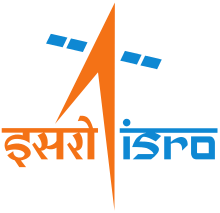Megha-Tropiques
| Mission type | Weather |
|---|---|
| Operator | ISRO/CNES |
| COSPAR ID | 2011-058A |
| SATCAT № | 37838 |
| Website |
meghatropiques |
| Mission duration | 3 years (planned) |
| Spacecraft properties | |
| Manufacturer | ISRO |
| Launch mass | 1,000 kilograms (2,205 lb) |
| Start of mission | |
| Launch date | 12 October 2011 |
| Rocket | PSLV-CA C18 |
| Launch site | Satish Dhawan FLP |
| Contractor | ISRO |
| Orbital parameters | |
| Reference system | Geocentric |
| Semi-major axis | 7,238.45 kilometres (4,497.76 mi)[1] |
| Eccentricity | 0.0009922[1] |
| Perigee | 860 kilometres (530 mi)[1] |
| Apogee | 874 kilometres (543 mi)[1] |
| Inclination | 19.98 degrees[1] |
| Period | 102.15 minutes[1] |
| Epoch | 25 January 2015, 01:35:41 UTC[1] |
Megha-Tropiques is a satellite mission to study the water cycle in the tropical atmosphere in the context of climate change[2] A collaborative effort between Indian Space Research Organisation (ISRO) and French Centre National d’Etudes Spatiales (CNES), Megha-Tropiques was successfully deployed into orbit by a PSLV rocket in October 2011.
Megha-Tropiques was initially scrapped in 2003, but later revived in 2004 after India increased its contribution and overall costs were lowered.[3][4] With the progress made by GEWEX (Global Energy and Water Cycle Experiment), Megha-Tropiques is designed to understand tropical meteorological and climatic processes, by obtaining reliable statistics on the water and energy budget of the tropical atmosphere.[5] Megha-Tropiques complements other data in the current regional monsoon projects such as MAHASRI and the completed GAME project.[6][7] Megha-Tropiques also seeks to describe the evolution of major tropical weather systems. The focus will be the repetitive measurement of the tropics.[8]
Design
Megha-Tropiques provides instruments that allow simultaneously observation of 3 interrelated components of the atmospheric engine: water vapor, condensed water (clouds and precipitations), and radiative fluxes, facilitating the repetitive sampling of the inter-tropical zone over long periods of time. Its microwave radiometer, Multi-frequency Microwave Scanning Radiometer (MADRAS), complements the radiometers of the other elements of the Global Precipitation Measurement mission.
Payload
Instruments fulfill a complementary role to other on geostationary satellites. In this, microwave instruments are essential.
- Microwave Analysis and Detection of Rain and Atmospheric Structures (MADRAS) is a microwave imager, with conical scanning (incidence angle 56°), close from the SSM/I and TMI concepts. The main aim of the mission being the study of cloud systems, a frequency has been added (150 GHz) in order to study the high level ice clouds associated with the convective systems, and to serve as a window channel relative to the sounding instrument at 183 GHz.
- Sounder for Probing Vertical Profiles of Humidity (SAPHIR) is a sounding instrument with 6 channels near the absorption band of water vapor at 183 GHz. These channels provide relatively narrow weighting functions from the surface to about 10 km, allowing retrieving water vapor profiles in the cloud free troposphere. The scanning is cross-track, up to an incidence angle of 50°. The resolution at nadir is of 10 km.
- Scanner for Radiation Budget (ScaRaB) is a scanning radiative budget instrument, which has already been launched twice on Russian satellites. The basic measurements of ScaRaB are the radiances in two wide channels, a solar channel (0.2 - 4 µm), and a total channel (0.2 - 200 µm), allowing to derive longwave radiances. The resolution at nadir will be 40 km from an orbit at 870 km. The procedures of calibration and processing of the data in order to derive fluxes from the original radiances have been set up and tested by CNES and LMD.
- Radio Occultation Sensor for Vertical Profiling of Temperature and Humidity (ROSA) procured from Italy for vertical profiling of temperature and humidity.[9]
Launch
The Megha-Tropiques satellite was successfully placed in an 867 km orbit with an inclination of 20 degrees to the equator by the Indian Space Research Organisation through its Polar Satellite Launch Vehicle (PSLV-C18) on October 12, 2011.[10] The PSLV-C18 was launched at 11:00 am on October 12, 2011 from the first launch pad of the Satish Dhawan Space Centre (SHAR) located in Sriharikota, Andhra Pradesh. The satellite was placed in orbit along with three micro satellites: the 10.9 kg SRMSAT built by the SRM University, Chennai, the 3 kg remote sensing satellite Jugnu from the Indian Institute of Technology Kanpur(IIT Kanpur) and the 28.7 kg VesselSat-1 of Luxembourg to locate ships on high seas.[11][12]
References
- 1 2 3 4 5 6 7 "MEGHA-TROPIQUES Satellite details 2011-058A NORAD 37838". N2YO. 25 January 2015. Retrieved 25 January 2015.
- ↑ Mission description. MEGHA-TROPIQUES: water cycle in the tropical atmosphere in the context of climate change.(Access date 06-21-2008)
- ↑ India and France Resurrect, Redesign Megha-Tropiques Mission, PETER B. de SELDING And K.S. JAYARAMAN. 24 February 2004
- ↑ ISRO and French Space Agency, CNES, Sign MOU on Megha-Tropiques Satellite Mission November 12, 2004
- ↑ "About GEWEX". Gewex.org. Retrieved 2010-12-05.
- ↑ "Monsoon Asian Hydro-Atmosphere Scientific Research and Prediction Initiative". Mahasri.cr.chiba-u.ac.jp. Retrieved 2010-12-05.
- ↑ "GEWEX Asian Monsoon Experiment". Hyarc.nagoya-u.ac.jp. Retrieved 2010-12-05.
- ↑ "Launch Info". Spacemart.com. Retrieved 2010-12-05.
- ↑
- ↑
- ↑
- ↑ "PSLV-C18 carrying weather satellite launched - The Times of India". The Times Of India.
